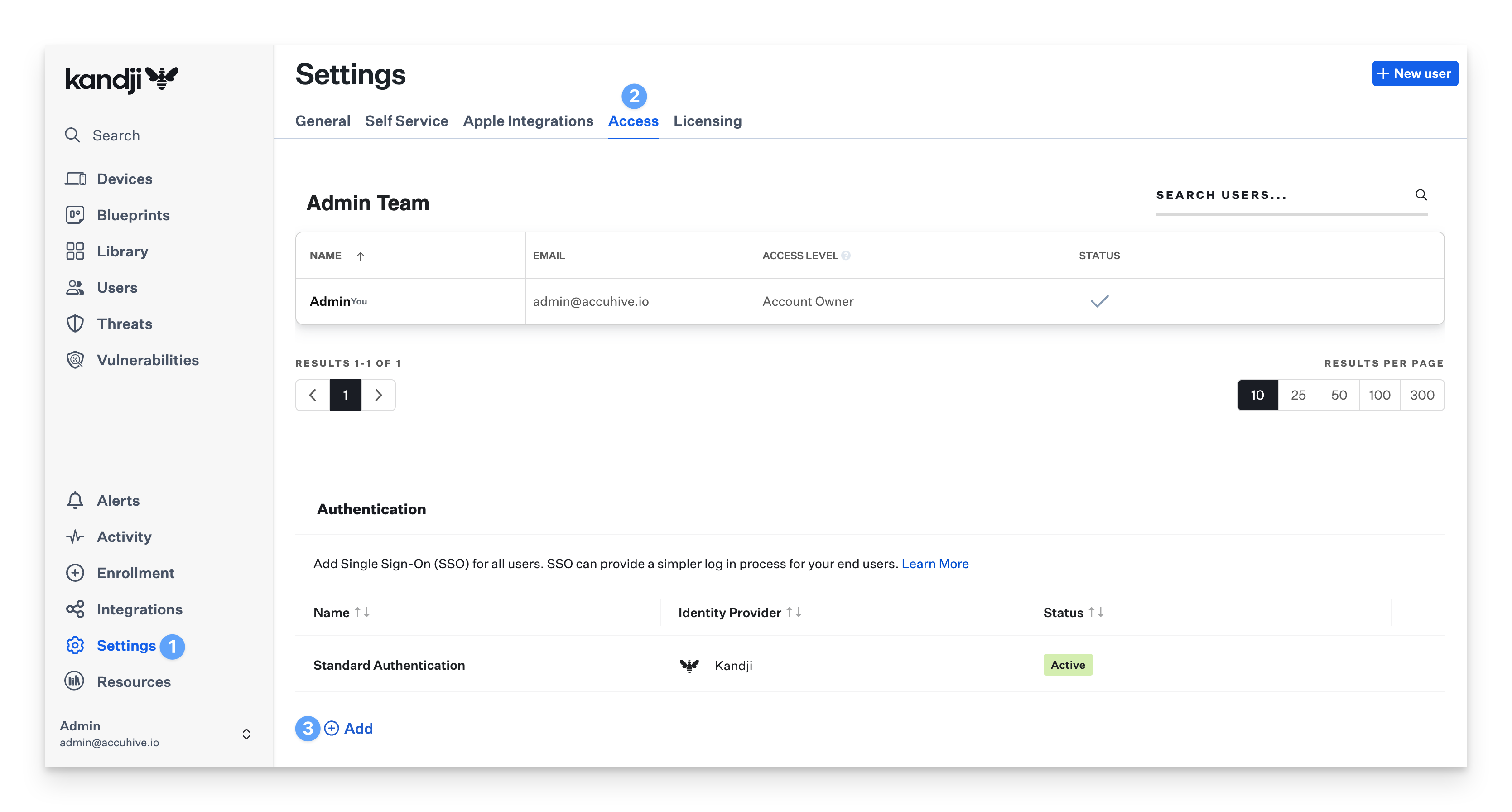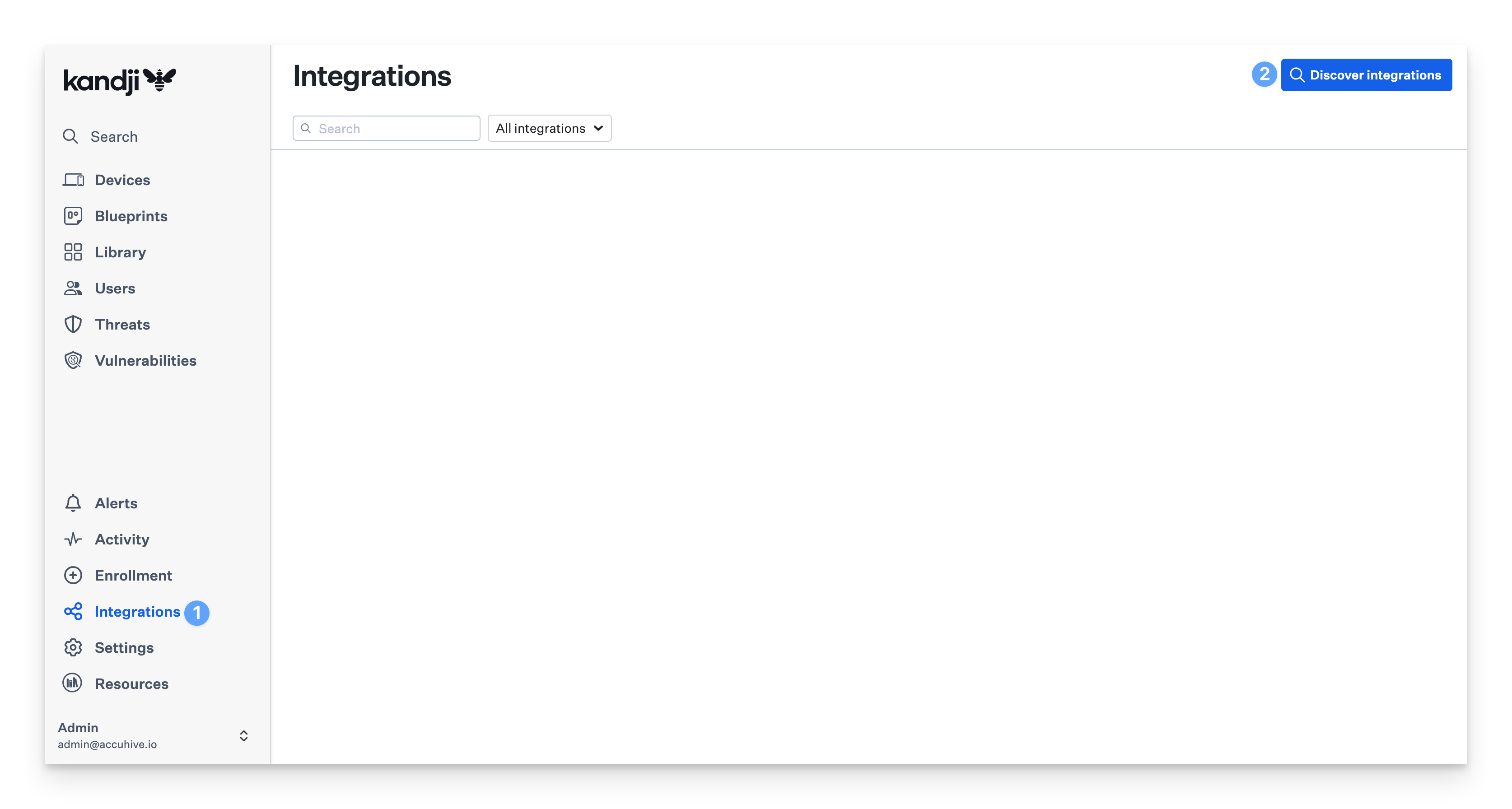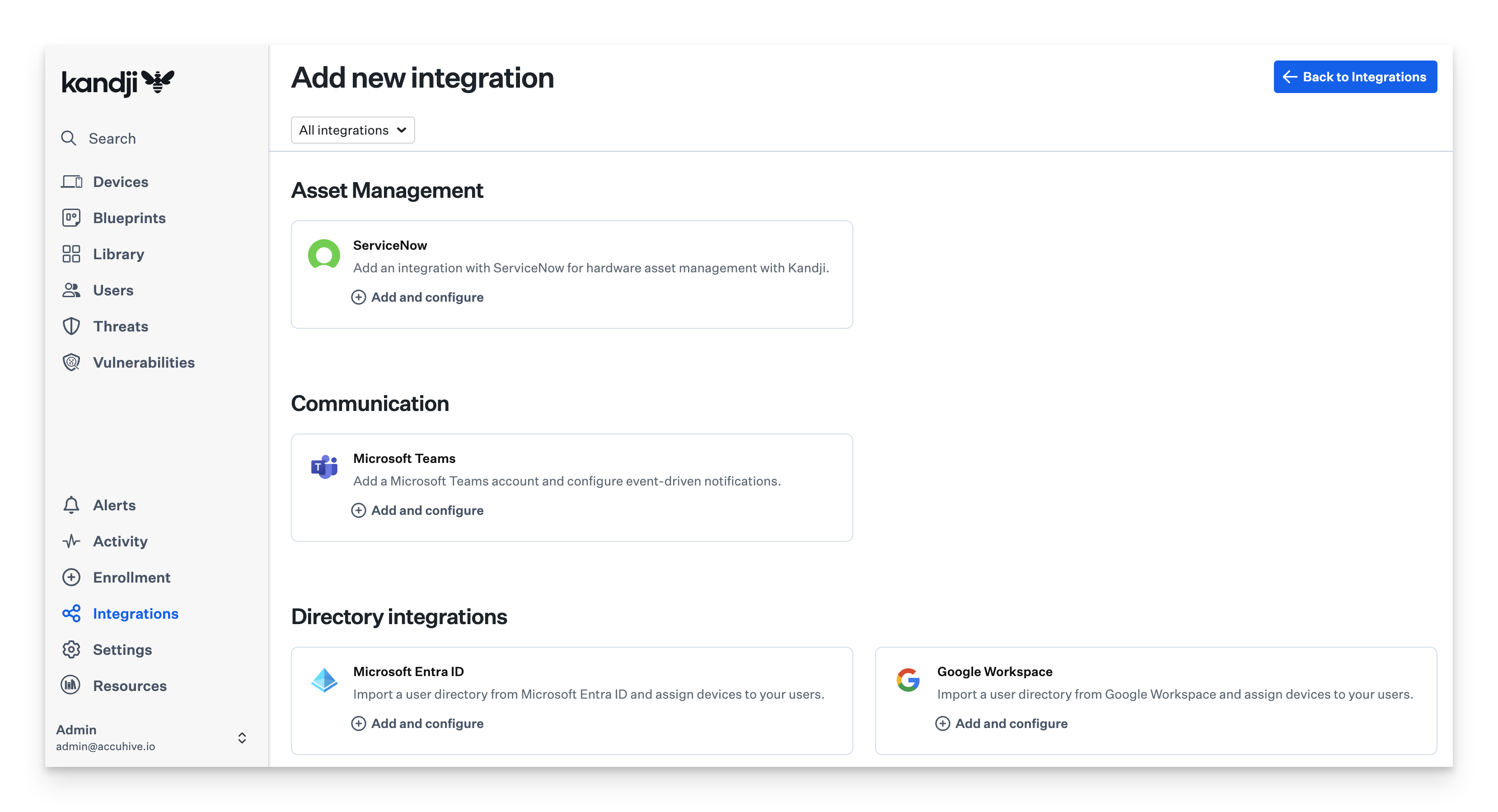Configuring Admins, SSO, and User Integrations is essential as it grants access to your Kandji Web App to the rest of your team.
Add Additional Administrators
Having more than one administrator helps if you are locked out of your account. To add additional administrators:
In your Kandji Web App, click Settings in the left-hand navigation bar.
Select the Access tab.
Click + New user on the top right.
.png)
Fill in the required fields and choose an appropriate access level for the new team member.
.png)
Invitations expire after 24 hours. If 24 hours pass before the account is created, an existing administrator or account owner must resend the invitation from the Access tab under Settings.
Configure SSO
Adding Single Sign-on (SSO) configurations allows for other methods for authenticating to your Kandji Web App. These SSO connections can also be used to Require Authentication with Automated Device Enrollment (ADE).
In your Kandji Web App, click Settings in the left-hand navigation bar.
Select the Access tab.
Click Add in the Authentication section.

Select the appropriate SSO Connection type.
Click Next.

Follow the following configuration prompts.
For additional information, see this article.
Configure User Directory Integration
Connect your organization's Microsoft Entra ID, Google Workspace, or configure a SCIM integration with a service such as Okta to sync users and identify which device belongs to which user. Kandji makes it simple to assign users to devices. It is not required but helps for inventory purposes. Users will appear in Kandji under Users.
In your Kandji Web App, click Integrations in the left-hand navigation bar.
Click Discover Integrations.

Select Directory Integrations from the drop-down.
Click Add and configure for the Directory Integration you'd like to configure.

Follow the configuration instructions.
For additional information, see this article.